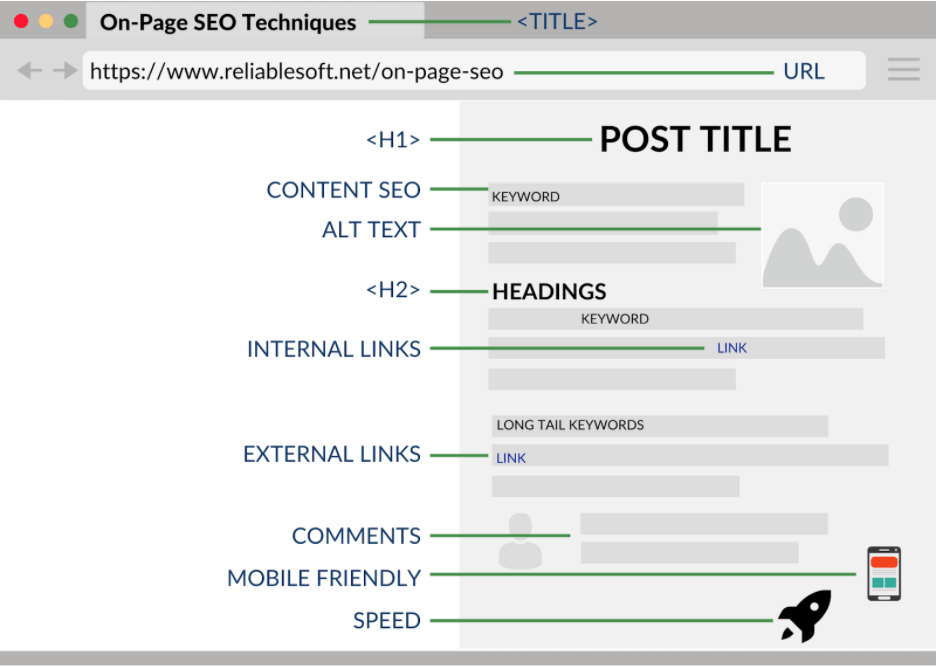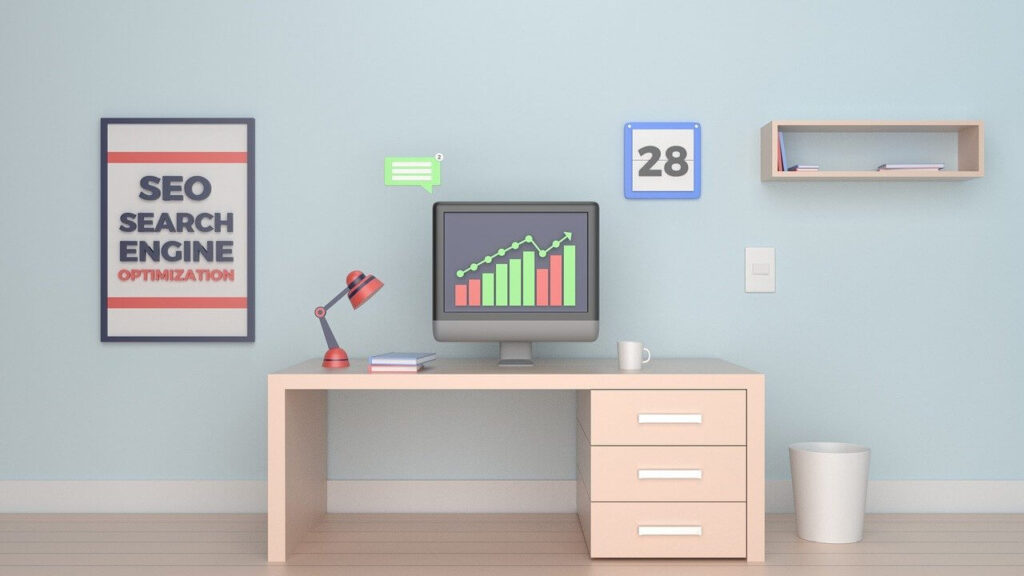Learn What is On-Page SEO in this Step-by-step Guide to rank your website on Search engine.
Do you know how On page SEO can help you to rank your website on Google? We share with
you the Step by Step Guide on On Page SEO so that when people search business related to yours,
your business can easily appear on search engines like Google, Bing & Yandex
SEO or Search Engine Optimization) can help your business rank on search engine like google, Bing & Yandex.
In simple terms it means the process of improving your site to increase visibility when people
search for products or services related to your business
You’ve spent hours browsing the internet for SEO tips and solutions
Studied numerous concepts and methods for improving your website’s SEO
You’ve even paid that self-proclaimed “expert” to create an SEO plan that meets your company’s objectives.
But, after all of the research and learning and planning, you come to a startling realization:
nothing has been accomplished.
Perhaps you’re scared or pressed for time being. But worry not.
In today’s day and age of the internet, it is crucial to rank on page one of search engine results.
And that can only be made possible by making your content SEO friendly. But, what is SEO?
SEO is the abbreviation for Search Engine Optimization; it determines how well
people receive your website and how it ranks on search results.
This On Page SEO Step By Step Guide will help you to rank your site on search engine.
There are three types of SEO, On-Page, Off-Page, and technical. Let’s take a look at On-Page SEO.
Table of Contents
What is On Page SEO
Learning On Page SEO Step By Step Guide will help you to understand the important elements of your website
On-page SEO, often called on-site SEO, is the practice of optimizing your website’s front and
back end elements to rank higher in search engines and attract new visitors
The components of on-page SEO include material features, site architecture aspects, and HTML elements
The search engine optimization of your website will be judged on three aspects:
- On Page SEO
- Off Page SEO
- Technical SEO
On-page SEO components will be discussed in more depth later.

External links, social media engagement, and other activities are all part of off-page SEO
The phrase “technical SEO” refers to SEO elements that aren’t covered in on-page and off-page techniques
and includes
- Structured Data
- Site Speed
- Mobile Readiness
Note: The term “trilogy” is often used to describe this SEO “trilogy.”
Some of these SEO elements will overlap, which isn’t always the case.
Throughout the piece, you’ll discover how and why it works that way.
Why is On Page SEO important

On-page SEO is essential because it informs Google about your website and
how you provide value to people. It aids in the optimization of your site for both
humans and searches engine robots.
You must optimize your website for Google and other search engines to rank and attract new visitors.
On-page SEO is known as “on-page” since the modifications and enhancements
you make to improve your website’s ranking can be seen by users on
your page (whereas technical and off-page SEO elements aren’t always visible).
On-page SEO is entirely up to you; that’s why it’s so crucial that you do things correctly.
Elements of On Page SEO
On your website, some of the most crucial components for search engine optimization occur.
You may hear a lot about link building (which we’ll get to shortly), but link building
won’t be as successful without solid on-site search optimization.
Here are the most basic on-site SEO elements you should include on each of your
website’s primary pages, including the homepage.
This On Page SEO Step by Step Guide will help you to understand the importance of
On page SEO for business write your meta description with a human audience
in mind since it will appear in search results.
Lets dive in and Learn the Elements of On Page SEO
- Title Tag
- Meta Description
- Content
- Meta Title
- Keyword Research
- Internal Linking
- Image Alt Text
- Header Tags
- Sitemaps
- Robot.txt
- Web Structure
- W3C validation
- RSS feeds Creation
Title Tag
The page’s title tag summarizes what the page is about to search engines.
It should be 70 characters or less and only identify your company or brand name and keywords
relevant to that specific page. The meta tag, which has a value of content script,
should be placed between the <HEAD> and the </HEAD> tags at the top of a page’s HTML code.
Meta Description
The meta description on your website’s pages gives search engines a little more
information about what your page is about.
A meta description is an HTML element that provides a brief summary of a web page.
A page’s meta description tag is displayed as part of the search snippet in a
search engine results page (SERP) and is meant to give the user an idea
of the content that exists within the page and how it relates to their search query.
Content
You’ve undoubtedly heard the terms “content development” and “content marketing.”
Content is beneficial to both your website’s visitors and search engines.
Customers might get distracted by other internet sites if you cannot make them stick around on yours.
And the longer they stay on your site, the better it will rank in search engines.
Learn : What is Content Marketing & its benefits
Meta Title
A meta title, also known as a title tag, refers to the text that is displayed on search engine result pages and browser tabs to indicate the topic of a webpage.
Keyword Research
A keyword is any word or phrase entered into Google (or another search engine) that helps describe what website content is about.
Link Building
Link building is undoubtedly one of the most discussed (and argued about) SEO activities.
The primary aim of link development is for other websites to link to your site.
If you consider ranking in Google’s search results as a popularity contest, links are similar voting
ballots that say your website deserves to be rated highly.
Links with keyword anchor text may assist you rank for keywords that are connected to.
Image Alt Text
Also called alt tags and alt descriptions, alt text is the written copy that appears in
place of an image on a webpage if the image fails to load on a user’s screen.
This text helps screen-reading tools describe images to visually impaired readers
and allows search engines to better crawl and rank your website.
Header Tags
Header tags, also known as heading tags, are used to separate headings and subheadings on a webpage.
They rank in order of importance, from H1 to H6, with H1s usually being the title.
Header tags improve the readability and SEO of a webpage
Sitemap
A sitemap lists a website’s most important pages, thus, making sure search engines
can find and crawl them.
Sitemaps also help in understanding your website structure, making it easier to
navigate your website.
Robot.txt
According to Google
A robots. txt file tells search engine crawlers which URLs the crawler can access on your site.
This is used mainly to avoid overloading your site with requests; it is not a
mechanism for keeping a web page out of Google
Web Structure
Site structure is a vital aspect of your SEO strategy.
The structure of your website shows Google which pages of your site are most important.
This means you can influence with your site’s structure which content will
rank highest in the search engines
W3C Validation
W3C validation is the process of checking your website’s code to determine if it
follows the correct formatting standards.
Failure to validate your code against these standards could mean your website suffers
errors or your traffic numbers aren’t as high as they could be due to poor readability
RSS Feeds Creation
RSS stands for Rich Site Summary and sometimes also for Really Simple Syndication.
The RSS feed contains updates of your website, i.e. updated content, videos, images, links, etc.
The users who are interested in these updates can subscribe your RSS feed that helps
get more free traffic and backlinks.
On Page SEO- Step By Step Guide Winding Up
This On Page SEO Step By Step Guide can help you to rank your website
Regardless, there’s no need to procrastinate when it comes to on-page SEO.
On-page SEO may help you attract many new visitors — and clients — to your website.
The tools that On-page SEO offers are also entirely up to you:
You get to choose the topic and objective of each page.
You get to decide who the target audience for that page is. And you get to pick the
keywords and phrases you want to concentrate on.
Learning What is On-Page SEO in above Step-by-step Guide will help you to
rank your website on Search engine so that your business can build engagement,
generate great quality leads, & sales.

